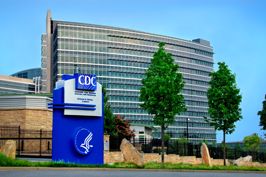CDC Sends COVID-19 Vaccine Guidance With Fall Timeline
The federal agency sent a checklist and priority list to all 50 states and 5 large American cities as it prepares for vaccine approval.

The US Centers for Disease Control and Prevention (CDC) sent guidance last week to all 50 states, territories, and 5 cities that address coronavirus 2019 (COVID-19) vaccine guidance including the criteria and potential scenario that vaccines could be distributed as early as the end of October in what they have called Phase 1.
According to a report in the New York Times, the 5 cities are New York, Chicago, Philadelphia, Houston, and San Antonio.
In the guidance, the CDC outlines 2 vaccines labeled as “Vaccine A” and "Vaccine B” with varying amounts of shipments, storage, orders, and administration.
Availability for Vaccine A will be approximately 2 million doses by late October; 10-20 million by late November; and 20-30 million doses by the end of December.
Availability for Vaccine B will be approximately 1 million doses by late October; 10 million by late November; and 15 million doses by the end of December.
While there will be limited amount of vaccines in the remaining months of 2020, the CDC said production will ramp up next year. “Planners should assume that by January 2021 significantly more COVID-19 vaccine will be available for distribution and plans will need to evolve to address additional vaccine availability,” the CDC wrote in their guidance. “Please refer to COVID-19 vaccine planning assumptions and additional guidance from CDC.”
The prioritized populations and anticipated vaccination sites that were included in the first round of vaccinations according to the CDC guidance are:
- Health care professionals, including long-term care facility (LTCF) staff public health closed temporary mass vaccination clinics + potential for mobile clinics
- Essential workers (specifics to be announced (TBA) — public health closed temporary mass vaccination clinics + potential for mobile clinics
- National Security populations public health closed temporary mass vaccination clinics + sites
- LTCF residents & staff pharmacy partners + mobile clinics
The federal agency also sent along a bulleted outline for early vaccination planning including:
- Jurisdictions should plan for real-time shipment of doses.
- Administration sites (during Phase 1) will not be required to store vaccine products beyond the period of Vaccine B can be stored at 2—8 °C.
- Vaccine will be free of cost, but administration fees may not be reimbursable while a vaccine product is administered under an EUA.
- Given the challenging storage, handling, and administration requirements, early vaccination should focus on administration sites that can reach prioritized populations with as much through put as possible.
- Stability testing is ongoing for Vaccine B; the storage and handling requirements presented here may shift. The requirements in these scenarios are likely the strictest set of requirements for which planning is needed.
- Jurisdictions should consider partnering with the private sector and with local hospital systems to provide vaccine in closest proximity to the prioritized populations as possible, given limitations with the product.
While the names of the vaccines have not been revealed, there are only a handful of potential vaccines that meet both the timeline and vaccine production. Check out our COVID-19 Vaccine Tracker to see what vaccine candidates may be potentially in the running.
